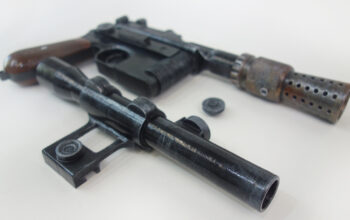To understand the operation of metal detectors, it is necessary to introduce some chemistry and physics concepts. We will do this without going into details. Therefore, we will try to simplify as much as possible not to overburden the reading, realizing that a scientific approach would require much more than a book.
Let us, therefore, start by remembering that the elements are divided into metals, non-metals, and amphoteric. Without delving into how the elements are classified, for our purpose, it is necessary to remember that the elements are in combination with each other and that they react differently with the outside world. One of these reactions is of particular interest for the understanding of the functioning of metal detectors and concerns the physical behavior of metals towards electrical and magnetic phenomena.
Concerning electricity, we can say that metals are conductive or allow the passage, more or less accentuated, of electric charges. The magnetic phenomenon affects metals in relation to their composition and, therefore, varies from element to element. We can also define magnetism as the ability of the elements to attract or repel similar matter.
Electromagnetism: the principle behind metal detectors
At this point, we can introduce the phenomenon that lies at the base of the operation of metal detectors, electromagnetism. At the beginning of the nineteenth century, it was discovered that a magnetic field was generated if an electric current was applied to a conductor. It was also discovered how these two elements, magnetic field, and electric current, influenced each other.
Thus, the magnetic field induced by the passage of current through a conductor and the analysis of the variations of this field at the introduction into it of a metal object turns out to be the basis of the operation of metal detectors.
It is interesting to note how the shape of the magnetic field induced by a direct current, such as that of the common batteries, which passes through a wire is a spiral, with the center conductor; while if the conductor in the shape of a ring-opened form of the magnetic field takes the form of a concentric spiral.
To increase the magnetic field’s intensity, a certain number of turns of electrical wire wound in the same direction are used. This set of wires is called a solenoid. The use of solenoids allows obtaining high-intensity fields even with reduced currents. These solenoids are nothing more than the plates of metal detectors.
Here are the three main phenomena that allow a metal detector to inform us about the presence of electrically conductive material:
- The deviation of the generated frequency caused by a change in the medium’s permeability (e.g. soil).
- The phase shift in the coupling of the solenoid due to the increase of the magnetic flux.
- Creating a magnetic field that is contrary to the sound.
Eddy currents for copper, silver, and gold
Some metals, such as copper, silver, and gold, however, do not react magnetically. To detect this category of metals, metal detectors exploit another physical phenomenon known as eddy currents.
This phenomenon occurs when the material is immersed in the magnetic field, for example, the one generated by the metal detector plate. The phenomenon generates a current that travels through the object, especially on the surface, which creates an antagonistic magnetic field to the initial one by subtracting energy from it.
In light of the above, we can conclude by stating that modern metal detectors in use integrate electronic circuits with the components able to detect one or more of these phenomena to obtain reliable indications on the presence of objects in the soil.
It is also evident that not all metal detectors can detect all metals. Each material, as we have highlighted, turns out to have its own reactions. The constructive choices will make the single metal detector more suitable for searching for certain objects to the detriment of others. If you are new to the metal detecting hobby and want to find a suitable detector for your needs, we would advise to read this article from metalpursuits.com about metal detectors for beginners with 5 best detectors to choose from.
An excellent compromise is the one integrated in the VLF (Very Low Frequency) technology that exploiting the phase variation generated by the metal immersed in the magnetic field allows the precise determination of the detected metal.
Related Posts












